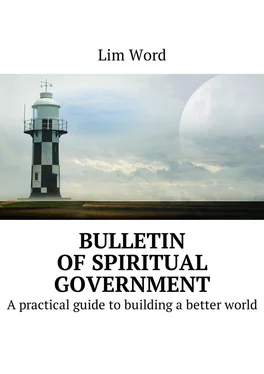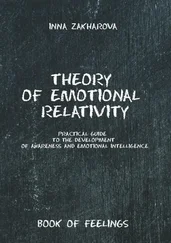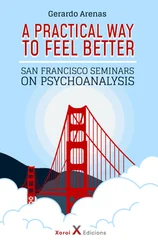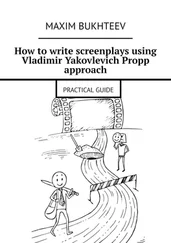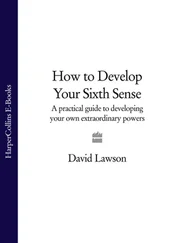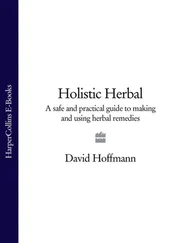Lim Word - Bulletin of Spiritual Government. A practical guide to building a better world
Здесь есть возможность читать онлайн «Lim Word - Bulletin of Spiritual Government. A practical guide to building a better world» — ознакомительный отрывок электронной книги совершенно бесплатно, а после прочтения отрывка купить полную версию. В некоторых случаях можно слушать аудио, скачать через торрент в формате fb2 и присутствует краткое содержание. ISBN: , Жанр: Публицистика, Религиозная литература, Эзотерика, на английском языке. Описание произведения, (предисловие) а так же отзывы посетителей доступны на портале библиотеки ЛибКат.
- Название:Bulletin of Spiritual Government. A practical guide to building a better world
- Автор:
- Жанр:
- Год:неизвестен
- ISBN:9785448593963
- Рейтинг книги:5 / 5. Голосов: 1
-
Избранное:Добавить в избранное
- Отзывы:
-
Ваша оценка:
- 100
- 1
- 2
- 3
- 4
- 5
Bulletin of Spiritual Government. A practical guide to building a better world: краткое содержание, описание и аннотация
Предлагаем к чтению аннотацию, описание, краткое содержание или предисловие (зависит от того, что написал сам автор книги «Bulletin of Spiritual Government. A practical guide to building a better world»). Если вы не нашли необходимую информацию о книге — напишите в комментариях, мы постараемся отыскать её.
Bulletin of Spiritual Government. A practical guide to building a better world — читать онлайн ознакомительный отрывок
Ниже представлен текст книги, разбитый по страницам. Система сохранения места последней прочитанной страницы, позволяет с удобством читать онлайн бесплатно книгу «Bulletin of Spiritual Government. A practical guide to building a better world», без необходимости каждый раз заново искать на чём Вы остановились. Поставьте закладку, и сможете в любой момент перейти на страницу, на которой закончили чтение.
Интервал:
Закладка:
3) For women, a separate room is set up, or a balcony with an opaque curtain.
4) Minbar – tribune, the department with which the imam reads Friday’s sermon. The Imam – “standing in front” is also “an example for imitation” – a clergyman, the head of the mosque, who directs the general prayer, performs the rites.
Trebas are sacred actions and prayers, performed by a priest at the request (request, order) of individual parishioners.
Imam in prayer can be any worthy Muslim who knows the Koran well, regardless of his social status. This service (usually without interruption from the conduct of any other activity, which gives daily bread) promotes the multilateral development of man. Imams are often teachers (mentors), interlocutors, writers, etc.
In Shiites, the imam (the supreme imam) who has the right to interpret the Koran and guide believers can only be (blood) heirs of the cousin and son-in-law of the Prophet, Abu Talib. “Small Imams”, ie, in the Sunni tradition, imams are appointed fuqaha (people who have a special theological education for service in the mosque). Hereditary right and appointment instead of elections are practiced, first of all, in Iraq, among Shiites, and also part of Saudi Arabia.
Mulla is a connoisseur of the ritual, the teacher of the madrasah and, also, the imam.
Muezzin (“screaming in public”) is an assistant to the Imam. Being on a high minaret, the muezzin calls on Muslims to perform compulsory prayer.
Kadi has the status above the imam of the mosque, and is the head of the Muslims of the city or region. In addition to worship, the kadi deals with litigation, family conflicts, the investigation of various kinds of crimes, and the punishment of the perpetrators. Kadi can be elected, or appointed, depending on the specifics of the state.
5. Mihrab. The niche in the wall of the mosque, indicating the direction to Mecca, giving the impression of an infinite deepening, serving as a focal point of the views of the parishioners. Usually the mihrab is richly decorated, well lit, has two columns and an arch. In the very hollow, he has the right to perform prayer, first of all, the imam.
6. Minaret (the Arab “manara”, i.e., “Mayak”), a high narrow tower for calling Muslims to prayer. Early minarets have a circular staircase from the outside, more modern ones – inside.
7. Park with ponds (fountains) for rest, a frequent addition to the mosque.
6 … We can develop the idea of a place of assembly, a temple in something most appropriate to the spirit of the times. Alas, the Orthodox Church, which did not seem to have learned any lessons from the events of a hundred years ago, is in fact separated from the people, whatever happens, is in the positive conviction of one’s own rightness, and is rigidly attached to the princes of this world. There is, however, the hope that in the presence of a new, friendly competition, it will reconsider its attitude to the world.
1) T. n. Lighthouse or Tribune. High tower, the location of the person chosen by the community for the transmission of prayers (desires, images of the desired reality), the so-called translation (translatio – translation) into the Light (World). Broadcasting time – from two to twelve hours (in the morning or evening dusk). At the same time, the Missionary (“Messenger”) kindles a flame in the oil lamp of the Lighthouse.
1a) A certain reflection of the Lighthouse, an artificial or natural elevation, the so-called. “Mountain”. On some holidays – a sacred place to collect the whole community.
2) Clean (leveled, plowed) place around Mayak. Enclosed by a shallow moat and a mound. At the Vigil, the Missionary (Tribune) has the right to descend from the tower and bypass it along the perimeter of the Circle.
3) The building of the Temple (Places of Assembly), called, by name of the Throne, Monolith (Mole), or Peace. Ideally, it is organized outside the village. Initially, it can be a collection in a conventional library, the so-called. anti-smoking, school, or even an apartment.
4) Four roughly identical rooms in the corners of the temple. A place for confession, solitary prayer, reading, preparing a sermon, preparing for the service, solving any practical matters, etc. There is a table, chairs, books on history, science and technology, the sacred texts of major world religions.
5) Circle of benches, for listening to the sermon, discussion and compilation of actual prayers (broadcasts), election of the Missionary.
6) Tribune, Monolith, Rum, or Missionary’s Throne. The pier is an elevation in the center of the room, with a lamp located just above the eye level (Mayak analog) on a massive stone stand. In the first versions, the mole is most likely only symbolic, later it can be transformed into a real acting, amplifying mental images, a physical device.
7) Location proper, Missionary. The tribune is elected from the community (local Spiritual Government), no more than twice in a row, to conduct a common prayer and, above all, broadcast. After discussing the global issues of the world order, parishioners move on to tasks of a smaller scale. These are state problems, politics and economics, the life of a house, a block, a settlement, the behavior of certain people. Persons guilty of certain crimes are given penance after the demonstration trial, with a presentation to the Missionary.
A missionary can nominate himself, or be elected at the suggestion of his closest friends. This person, already in a new status, puts on his neck a knotted white scarf (ribbon), which suggests the name Zona (from the Latin “belt”). The color of the bandage The zone is white, or silver, can vary with thin black, red, etc. strips.
Being in one of the corner rooms, Tribune listens to the confessions of the parishioners, gives advice (he has the right to do it, even with some pressure), corrects their dreams from the positions of the general principles of humanism and common sense. The main idea of the Temple, the symbol of faith: all the best wishes to incarnate, we are obliged to help it, paradise is created by its head and hands, the divine presence is manifested precisely in this work.
Of course, the word Rye means not so much material welfare, but, first of all, the relationship between people. The parishioner of the Monolith is obliged to reflect on the effective, and even divine social structure, also on one’s own health, beauty, awakening of unusual useful abilities, rejuvenation (the concept of gradual flow into the Kingdom of Heaven).
Around the ascent of the Missionary, standing on the platform, the parishioners circle around, or (and) the traditions have not yet been worked out, applauded, and glorify their chosen one. The latter reads sermons, historical texts with morals and meaning (awareness of certain mistakes of humanity). Here he announces, in what form, exactly what desires of parishioners he intends to Broadcast.
Further, the parishioners diverge, and the chosen Servant remains alone, for the concentrated ascension of prayers into the Light.
In another version, or at the same time, the Missionary goes to the Lighthouse, lights the fire and prays there, also, completely alone, for hours or even days.
On the progress of the meeting, Broadcasting, a detailed report is drawn up, (preferably) a video is filmed, these messages are sent to the Internet for public viewing …
8) Residential premises for community members: dining room, rest room or meetings, bedrooms, food stores, etc. An untouchable food reserve is formed, in case of any global cataclysms.
9) School of Spiritual Government. The premise for children, where they can develop, invent, comprehend the basics of business, and even sell their own crafts.
10) The field for the games of children of the Spiritual Government. The testing ground for vehicles of own production, other inventions, running-in of reconstructed armor, and (under supervision of adults, owners of tickets of hunting clubs and, accordingly, weapons) is a shooting range for improving shooting skills.
Читать дальшеИнтервал:
Закладка:
Похожие книги на «Bulletin of Spiritual Government. A practical guide to building a better world»
Представляем Вашему вниманию похожие книги на «Bulletin of Spiritual Government. A practical guide to building a better world» списком для выбора. Мы отобрали схожую по названию и смыслу литературу в надежде предоставить читателям больше вариантов отыскать новые, интересные, ещё непрочитанные произведения.
Обсуждение, отзывы о книге «Bulletin of Spiritual Government. A practical guide to building a better world» и просто собственные мнения читателей. Оставьте ваши комментарии, напишите, что Вы думаете о произведении, его смысле или главных героях. Укажите что конкретно понравилось, а что нет, и почему Вы так считаете.
